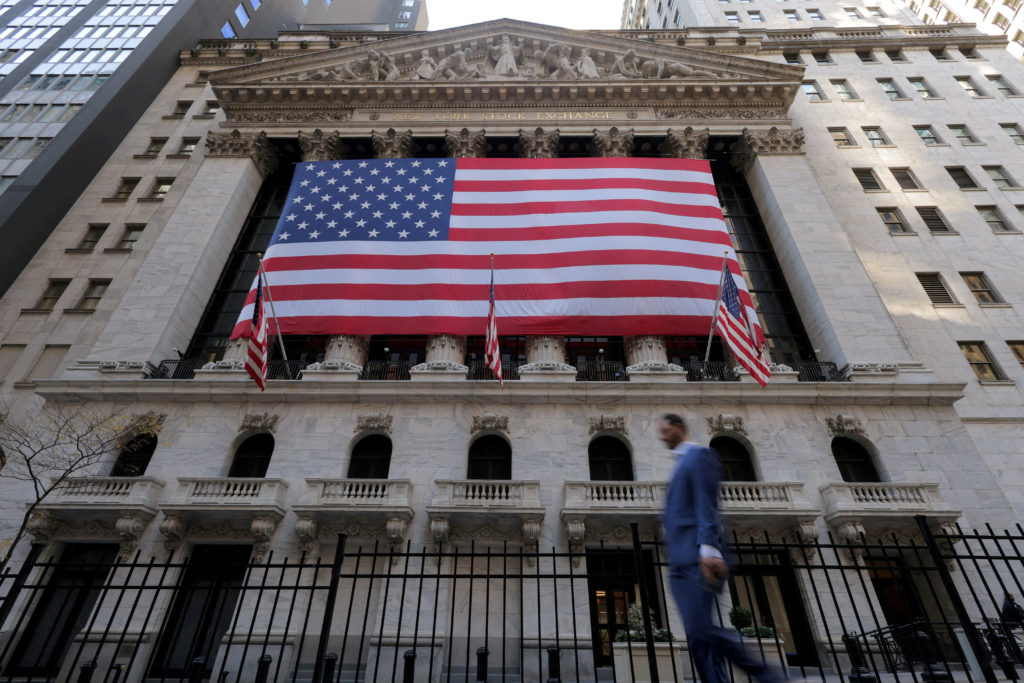
Dollar and stock prices finish 2024 stable, and Trump dominates 2025
The dollar remained strong versus the majority of other currencies on Tuesday as global markets remained stable in cautious year-end trade, with investors reducing their bets for significant U.S. interest rate reduction in 2025 in anticipation of the new Donald Trump administration.
With a New Year’s holiday approaching, volumes were low, and the Santa-rally mostly failed to happen as high Treasury yields supported the dollar and weighed on high equities values.
Despite being flat on the day, MSCI’s world share index is expected to end 2024 with an annual gain of 16%.
With the S&P 500 rising about 24% (.SPX), opens new tab, and MSCI’s broadest index of Asia-Pacific shares outside of Japan gaining 8% (.MIAPJ0000PUS), opens new tab, and Europe’s STOXX 600 rising only 5%, this year’s surge has mostly been a U.S. phenomena.
However, due to increasing U.S. Treasury yields, the tone has recently been more cautious. Late last week, the 10-year note’s yield hit its highest level since May, at 4.64%.
This is somewhat of a shift because the U.S. benchmark yield had been below 4.5% throughout the entirety of the second half of 2024 until late December.
Lee Hardman, senior currency analyst at MUFG, stated that this upward pressure “reflects investor unease over the potential inflationary impact from the incoming Trump administration’s policy agenda.”
Theoretically, investors expect President-elect Trump’s policies of stricter immigration, tax cuts, tariff hikes, and looser regulations to be both inflationary and pro-growth, which would maintain high U.S. rates.
“The Fed has already displayed more caution over cutting rates further next year in light of potential policy changes,” stated Hardman.
However, following a seven-bp decline on Monday, the 10-year yield fell three basis points on Tuesday to trade at 4.52%, indicating end-of-year positioning.
In a similar vein, end-of-year tax positioning, concerns about valuations, and uncertainty surrounding 2025 were the key causes of Monday’s steep losses for all three major U.S. indices.
China
China’s manufacturing production barely increased in December, but services and construction recovered, indicating that policy stimulus is leaking into some sectors as the economy prepares for new trade threats. These were the only noteworthy economic numbers from Tuesday.
The National Bureau of Statistics purchasing managers’ index missed a consensus prediction of 50.3 in a Reuters poll and fell to 50.1 in December from 50.3 the previous month, just staying above the 50-mark that indicates growth.
Hong Kong (.HSI) opened a new tab that was only held in positive territory, while onshore Chinese blue chips (.CSI300) opened a new tab that was down 1.6%.
The CSI 300 saw its first yearly rise of 14% for the entire year of 2024 after an unheard-of three-year fall. Following four years of falls, the Hang Seng Index had an 18% increase.
With a 10% drop, South Korea’s KOSPI (.KS11), opens new tab, was Asia’s worst-performing stock market this year as investor morale was negatively impacted by political unrest.
Politics also contributed to some underperformance in Europe; following an indecisive election and the fall of one administration under Michel Barnier, politicians continued to wrangle over the 2025 budget, causing France’s main index to drop 2.8% in 2024 (.FCHI), opens new tab.
for the other hand, despite a political vacuum in Germany ahead of the February election, the German benchmark is up more than 18% for the year thanks to significant rises by a few Frankfurt-listed companies, including software company SAP (SAPG.DE), opens new tab.
The dollar has dominated currency markets in 2024, rising against all other major developed-market currencies as inflows to the U.S. were fueled by higher U.S. yields and outperforming stock markets.
Despite a 0.16% decline on Tuesday, the dollar index, which compares the value of the US dollar to six other currencies, remained near the two-year high reached in November. This year, the index is expected to increase by 6.5%.
Due to worries about demand in the top-consuming nations, oil prices were on track to drop for a second consecutive year. U.S. West Texas Intermediate crude fell 1% for the year, while Brent crude futures fell 3.4%.
On Tuesday, both managed to make modest gains.
However, gold had a spectacular year, rising more than 26%, its best annual performance in more than ten years due to demand for safe haven assets amid global geopolitical unrest and monetary policy easing.
All Categories
Tags
+13162306000
zoneyetu@yahoo.com



